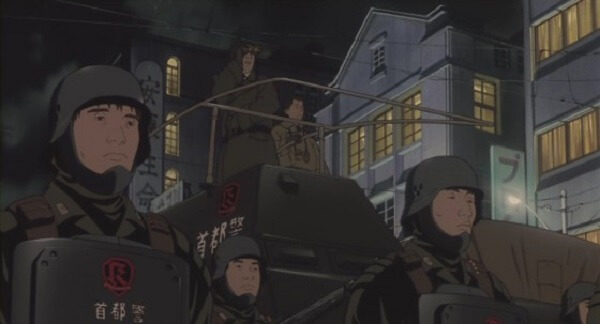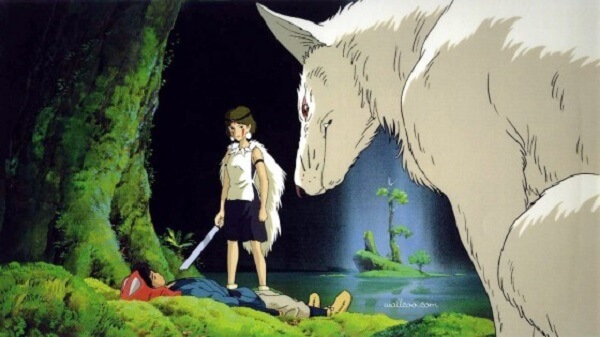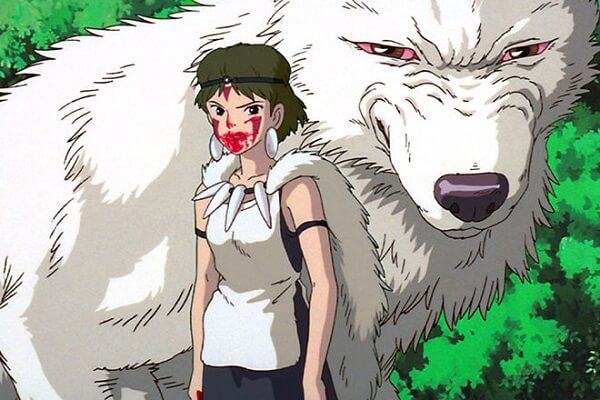Seinen is a genre/demographic that caters primarily to male college students and young adults. Seinen anime and manga are more mature than their Shounen counterparts, which are aimed at younger boys.
This can be seen in Manga, where the use of Kanji in the writing is a Seinen trademark. This is in contrast to Shounen Manga, which have Furigana (a type of reading aid) next to the Kanji to assist younger readers who haven’t progressed far enough in their Kanji studies.
Seinen series are frequently aired at later timeslots in anime. For example, Neon Genesis Evangelion, which is known for its cryptic, off-the-wall story telling, is considered Shounen because it aired at 6 p.m. and was directed at youth by Hideaki Anno.
Also, Seinen is occasionally mistaken for shows with a dark, edgy tone and brutal violence, but this is a common blunder. Shingeki no Kyojin (Attack on Titan) is an example of a series with similar content and tone that is actually a Shouen series that is published in a magazine aimed at a younger audience.
Seinen differs from Shounen in a number of ways, but the most obvious is that Seinen series have a more complex plot, more mature themes and content, or a main character who is older. In terms of conflict, the Seinen series is far more cynical and pragmatic.
It’s also more likely that the conflict in a Seinen series will be more nuanced, rather than black-and-white, and pitting good against evil. In comparison to Shounen battle manga, Seinen devotes far more attention to things like the overall plot, character interaction, and dynamics than to fighting.
Seinen Material is known for its increased realism, which is often achieved through a more realistic art style or the inclusion of details throughout the story to bring it closer to reality. Even in Science Fiction or Fantasy Seinen, fictional worlds can function very similarly to our own, and are frequently subject to the same increased cynicism as our own.

It’s also worth noting that Seinen usually refers to shows that are marketed to an older demographic, rather than who the show ultimately appeals to.
Seinen material can appeal to both younger and older male and female audiences, as can virtually all demographics of anime. Intriguingly, slice-of-life, high-school, or rom-com films are also popular. Moe shows are generally considered to be part of the Seinen demographic.
It’s important to note that these characteristics are based on a sliding scale rather than a hard and fast rule. Many Seinen titles also don’t have all of the qualities listed above, but do have others that place them in the Seinen realm.
Serial Experiments Lain, for example, has a young girl as its protagonist, but it belongs to the Seinen genre because of its complex themes, philosophical outlook, and dense, cryptic story-telling.
Tatami Galaxy is an example of a show with an idealized, rather than realistic, art style, but which is much more realistic in terms of themes of growing up and development, as well as its college setting.
Mature Content, Plots and Themes
As previously stated, a common misconception is that Seinen series are only dark and edgy shows. This is an easy mistake to make, especially since Shounen series with darker content, such as Death Note and Shingeki no Kyojin, have grown in popularity outside of Japan. What distinguishes a Seinen series from others is that it has more mature themes and plots, rather than just a lot of violence.
This isn’t to say that violence isn’t a common occurrence in Seinen shows; it certainly is, especially in those with an action element. However, the plots or themes that the show deals with are more suited to an older audience, which is where the dividing line between Shounen and Seinen often occurs.
Character motivations may also be more enigmatic and difficult to decipher. These are elements that are frequently dependent on the viewer, and which an older person may have a better chance of fully comprehending.
It’s not that younger viewers wouldn’t understand, but it’s a little advanced for their age group. Imagine reading Kafka or Dostoevsky in middle school; some students may be able to do so, but the majority of us may struggle.
Consider the movie Jin-Roh: The Wolf Brigade. The main plotline in Jin-Roh involves characters caught in a web of multiple feuding Japanese government security agencies, as well as a populace revolting against an autocratic regime.
The various developments are subtle, understated, and likely difficult to comprehend for younger viewers. In terms of its themes, Jin-Roh investigates how human relationships and individuals are tainted and possibly doomed when they exist beneath an oppressive structure, and how becoming entangled in various factions may cause us to lose a little bit of our humanity.
Gray Morality
Conflicts arise frequently in the Seinen series between people, factions, or nations who lack a clear moral high ground. One group may have noble goals, but its methods of achieving them result in violence against innocent people.
One group may be defending the common good, but only to keep a particular segment of a ruling class or family in power. As a result, it’s not always clear which side we should be on, and in many cases, there isn’t a single side we should be on.

As a result, characters with more shades of moral complexity emerge. The main character may not be an ideal-hero, someone who always tries to act justly and selflessly, but instead has more roguish and selfish character traits, as well as a much more flawed character.
In addition, the main villain may have goals that aren’t necessarily evil. Their motivation may be purely selfish, or they may be attempting to right a wrong, but they are employing extreme tactics.
Gray morality does not imply that it will never be resolved in the interests of the greater good. Princess Mononoke, a famous Ghibli film, is a great example of this.
Iron-Town and the creatures of the forest are the two main antagonists in the film. Iron-town is primarily made up of downcast and oppressed members of human society, such as war refugees, lepers, disease victims, and widowed/unmarried women.
It’s a haven for those oppressed by Japan’s feudal system, but in order to survive and defend itself, it clears the forest to use timber as a fuel source, putting them at odds with the creatures who live there, who are simply trying to protect their home. It’s difficult to justify a moral high ground in the conflict because both sides have good reasons for fighting.
In comparison, Shounen series may have a conflict with a lower moral complexity. They frequently feature a hero who you’re supposed to root for and identify with, and who is always seen doing the right thing. It could have a villain who is completely evil, with selfish and cruel motivations and methods.
Princess Mononoke/Mononoke-Hime
Ashitaka is a prince from an eastern tribe who saves his village by battling a cursed boar, only to be cursed himself. Ashitaka flees the village in search of a cure for the curse before it kills him, and he comes across Iron-Town, which is defended by gunpowder weapons. However, the forest creatures, led by a princess named San, seek vengeance on Iron-town for the forest’s destruction.

Narratives that are dense and philosophical
A lot of series within the demographic might have a dense, philosophical layer to them, adding to the complexity that is a hallmark of Seinen.
That is, they pose philosophical questions or tensions, either explicitly or implicitly, and frequently provide an answer or a suggestion to the question, which is often open to interpretation. This isn’t to say that you couldn’t discuss philosophical issues in anime aimed at younger audiences; it’s just that in Seinen, it’s much more common for a creator to explicitly consider philosophical issues when creating a series.
Now, just like so many other things we’ve discussed, what makes a series dense is a matter of personal preference, experience, and interpretation.
Some of us may be able to grapple with the show’s complex narrative themes and questions from the start, such as Serial Experiments Lain or the Ghost in the Shell films. Re-watchings and experience with secondary materials or written analysis may be required for the majority of us. In general, these series are more intricate and complex, and their presentation may be more outré than usual.
The original Ghost in the Shell film is an example of this. In contrast to the series, Stand-Alone-Complex, which is dense in and of itself, the original film has a lot to unpack in its short run time and art-house presentation style.
The film Ghost in the Shell examines identity in a world where technological advancement has resulted in Post-human life. Many regular people have cybernetic enhancements, and some are fully cybernetic, with computerized brains and a mechanical frame for a body.
In essence, Ghost in the Shell examines these post-human beings grappling with their own identity, forcing us to consider what makes something human, and whether or not androids can be considered human.
Final Thoughts
One thing to keep in mind is that some of Seinen’s characteristics can be found in other series as well. Seinen does not always imply darker or smarter; it simply means that the series is more complex than those aimed at a younger audience, with less idealism and more layered, philosophical narratives.
Also, keep in mind that some of the examples listed aren’t necessarily the ‘best’ of whatever quality they’re illustrating. Princess Mononoke isn’t the most morally ambiguous anime film, and Ghost in the Shell isn’t the most philosophical anime story, but both serve as examples of those qualities.
Let us know what some of your favorite examples of these traits are in the comments section below. What are some of the other characteristics that define Seinen Anime and Manga? We hope you enjoyed and understood all of our explanations and details, and please leave a comment below to let us know what you think!
Also, Read Angel Adoree, Ava Michelle Cota, Kaitlin Sharkey, Melanie Olmstead
